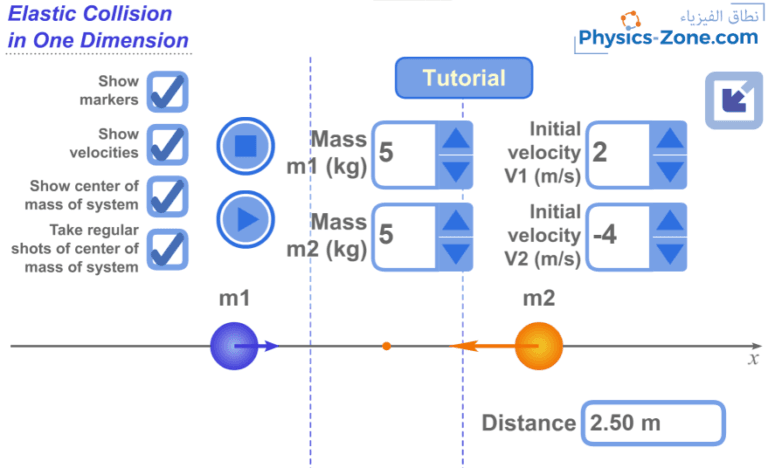Conservation of linear momentum
لقراءة النسخة العربية أنقر هنا.
This video shows how the cannon recoils when it shoots the bullet. Notice the sandbags that are put behind the wheels of the cannon to stop it from rolling off. Otherwise, it will recoil a larger distance due to the high impact of shooting the bullet.
It is noticeable that the backward recoil velocity of the cannon is much less than the forward launching velocity of the bullet, while the mass of the bullet is much less than the mass of the cannon. This leads us to conclude that there is an inverse relation between the velocity (speed in a specific direction) and the mass of the interacting bodies (in this example, the cannon and the bullet).
If the experiment is done in a situation where the net external force is zero on the loaded cannon just before and just after firing (like when the weight of the cannon is balanced with the normal reaction of the ground), then, when we calculate the product of the mass of the bullet by its velocity and the product of the mass of the cannon by its velocity just before and just after firing, we will find that before firing both were at rest so the product is zero for both, while, after firing, the two products are of the same magnitude but the velocities of the cannon and the bullet are of opposite directions. Mathematically:
where
m is the mass of the bullet;
M is the mass of the cannon;
is the initial velocity of the bullet just
before firing;
is the initial velocity of the cannon just
before firing;
is the final velocity of the bullet just
after firing;
and is the final velocity of the cannon just
after firing.
Hence:
The above equation represents the principle of conservation of the linear momentum of the system formed of the cannon and the bullet
{cannon, bullet}. The more general form of this principle says that the summation of the linear momentum of an isolated system of particles is conserved, i.e. remains constant. (Isolated means that the net
external force on the system is zero, i.e. ). Mathematically:
where
is the linear momentum of the bullet, defined as the product of its mass by its velocity, and
is the linear momentum of the cannon, defined as the product of its mass by its velocity, and
is the summation of the initial linear momentums of the system {cannon, bullet}, and
is the summation of the final linear momentums of the system {cannon, bullet}.
Note that can be the summation for a system of any number of particles.
So, the principle of conservation of linear momentum, in a short and general mathematical form is:





